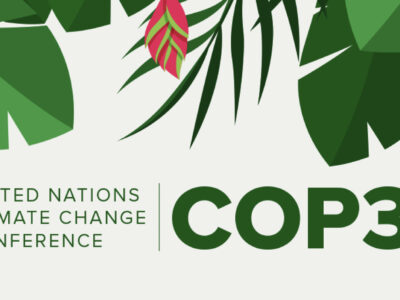Researchers have long recognized the Arctic as a region that shows early and amplified signals of anthropogenically-driven global climate change (e.g., IPCC 2001; Technical Basis, p. 807). Among the most dramatic and most widely watched changes in this region each summer is the retreat of the Arctic sea ice extent. Since it first became possible to track the extent of Arctic sea ice by satellite observations in 1979, scientists have focused increasing attention on the retreat of the summer sea ice cover as revealed by the growing number of summer minima observations
Two research findings highlight the severity of change in the Arctic (Figure 1, for an animated depiction click here). It clearly illustrates two critical features:
- the Artic sea ice cover has considerable interannual variability and
- the trend is towards a smaller summer sea ice cover.

In addition, this figure shows the widely publicized record drop in the Arctic sea ice extent in 2007, followed by a modest recovery in 2008. Even with that modest improvement in the 2008 extent, it was still well below the second lowest sea ice extent, observed in 2005.
Figure 2 gives an impression of the spatial distribution of the sea ice in 2007 and 2008, together with mean sea ice extents for summers of previous periods (1979 to 1983, and 2002 to 2006).

There is considerable variability in the spatial pattern of sea ice retreat from year to year, but, in general, the largest meltback occurs in the Canadian Basin. The primary forcing behind the observed decrease in sea ice extent is atmospheric warming with some contribution of warming from the underlying ocean into the ice cover.
An obvious and important set of questions arise from these observations: Have we crossed a threshold in Arctic sea ice decline? If, under the present forcing, the Arctic sea ice cover is not able to recover, when could we expect an Arctic Ocean that is free of sea ice during summer? Model simulations have projected this scenario by ca. 2040 (e.g., Holland et al. 2006; Fig. 3) and actual observations over the past few years indicate a decrease that is even faster than what the models have projected.

Given the information currently available (observations, sea ice dynamics, and physics that underlie model projections), we have to expect that the negative feedbacks in the Arctic are not strong enough to counter the forcing that leads to further reduction of the extent of summer Arctic sea ice.
In fact, the strong decline of the sea ice cover in 2007 should not have come as a surprise, had the observing systems been interpreted correctly. The strong drop in sea ice extent in 2007 was preceded by many years of thinning of the Arctic ice cover, which made it more vulnerable to atmospheric conditions conducive to strong melting. In 2007, a sea ice cover weakened by multi-year thinning encountered atmospheric conditions conducive to effective removal of sea ice from the Arctic Ocean by wind-driven export and in situ melting due to reduced cloud cover and anomalously warm air masses.
The evolution of the sea ice cover in 2008 did not bring a further minimum in extent as expected by several research groups (e.g., the Sea Ice Outlook of the Study of Environmental Arctic Change). However, it did bring a minimum in sea ice volume because, although the extent was somewhat larger than in 2007, the ice was thinner in many regions (e.g., Fig. 4). Based on these findings, one could argue that the sea ice cover is more vulnerable than ever before.

Thus, it appears that the Arctic Ocean is moving rapidly toward ice-free summer conditions and that this new reality will occur sometime before or around the middle of this century. Ice-free summers in the Arctic will have many consequences—both adverse and positive—for the physical climate system and ecosystems of the Arctic Ocean and adjacent regions. The opportunities for exploration of an ice-free Arctic Ocean, including increased shipping and resource exploration, will be offset by loss of habitats and forced changes in the use of coastal oceans by northern populations. The Arctic research community needs to find responses to the challenges posed by such changes in order to minimize adverse effects and to maximize opportunities.




Ewing on a cruise from Reykjavik to Woods Hole. Dr. Broecker was and is one of those rare individuals that possesses both an intimate knowledge of the details and an impressive grasp of the larger picture. I learned alot from him on that trip. So, my thanks and congratulations on the award!
[…] it was Jean-Claude Gascard. Peter Schlosser was not able to make the meeting but it looks like he blogged the report and it has several of the slides that were used. Some of what Jean-Claude discussed is also […]
Do you think that 2009 ice will be less than 2007? If you do, you may be interested in betting on it: http://scienceblogs.com/stoat/2008/09/sea_ice_declaring_victory_and.php